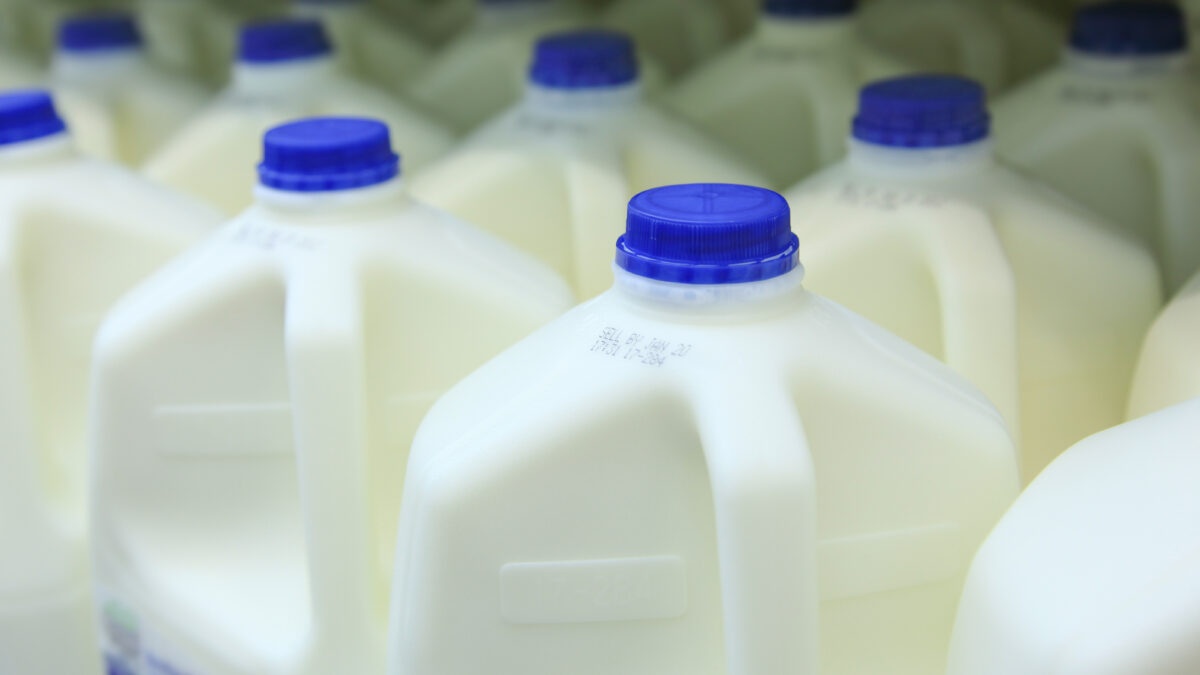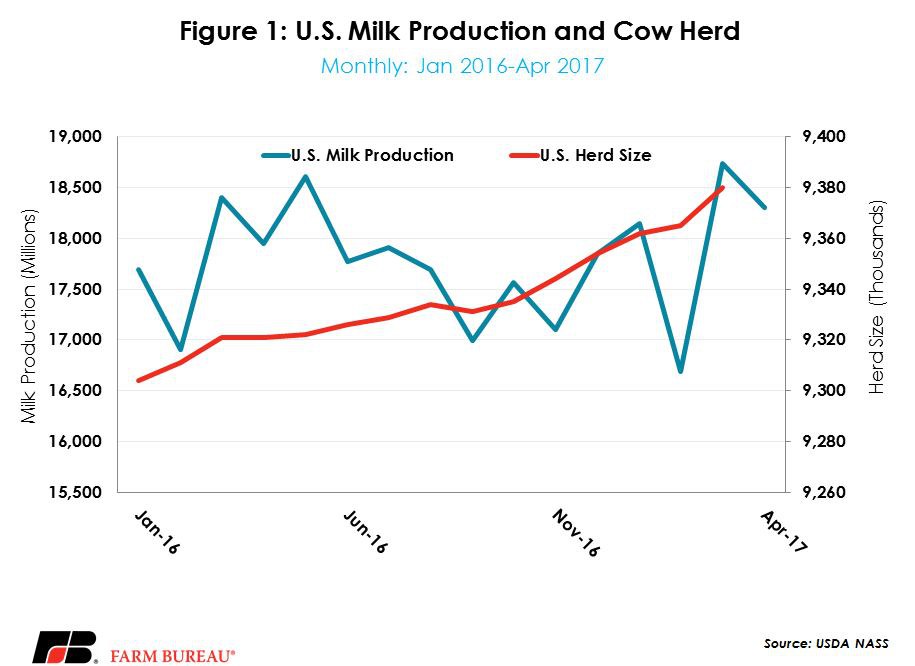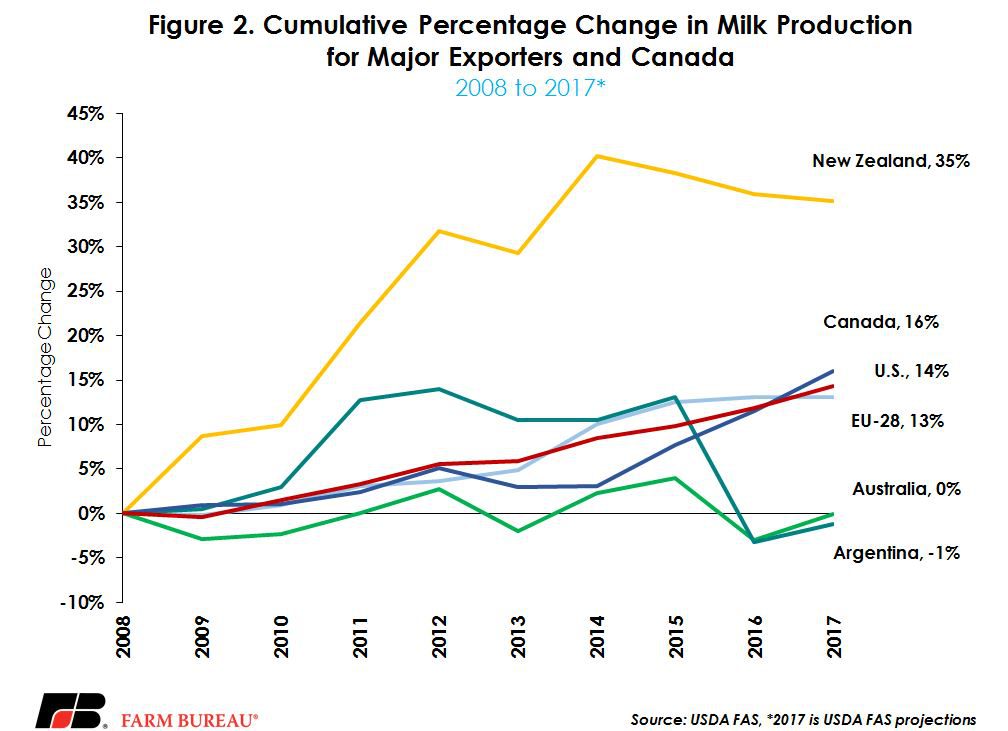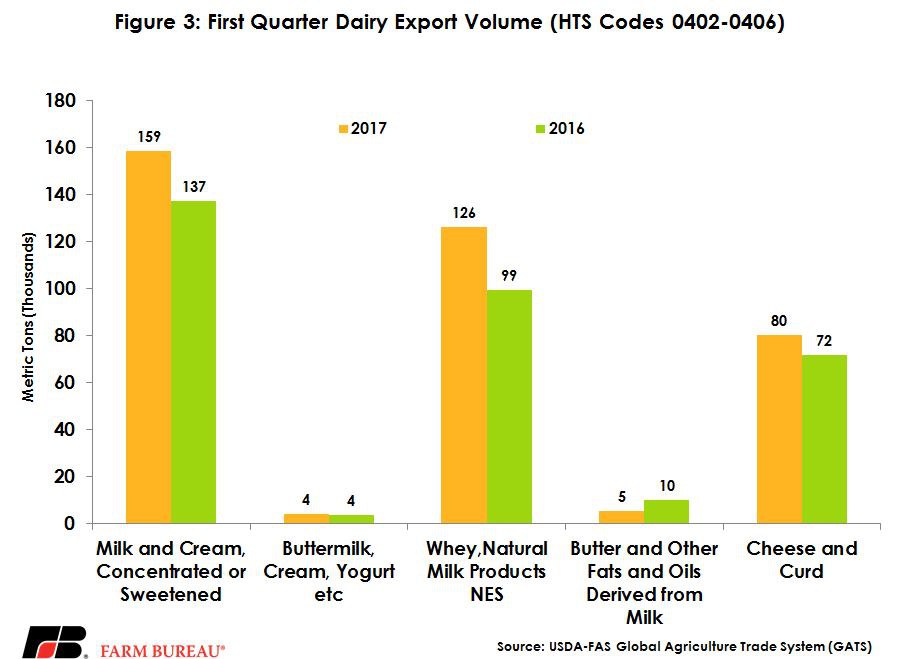U.S. Milk Production Continues to Climb
AFBF Staff

photo credit: Getty
USDA National Agricultural Statistics Service released the monthly Milk Production Report for April 2017 on May 19, 2017. The U.S. dairy herd continued to outpace last year’s production figures on all accounts, increasing milk per cow by 24 pounds and total production by 336 million pounds. It is also the sixth consecutive month of rising milk cow numbers, bringing the total dairy herd to 9.39 million head, a level not seen since 1995. Milk production year-to-date has shown steady gains--January through April is up 1.3 percent. Figure 1 shows milk production and cow herd growth over the last 16 months.

This is in contrast to recent reports coming out of milk producing regions in other parts of the world. The European Union released its preliminary March milk production figures last week indicating March 2017 production was up 0.02 percent from a year ago. However, January and February were both down, putting the first quarter 1 percent lower in aggregate from 2016. A recent USDA Foreign Agricultural Service GAIN report indicated Australia is expecting a 2.7 percent decline in milk production in 2017, citing lower farm gate prices and a smaller dairy herd as primary drivers. New Zealand dairy production also began 2017 rather sluggishly, posting year-over-year declines in January and February, but showing gains in March and April. Year-to-date milk production is up 2.3 percent. Figure 2 shows cumulative increases in major exporting countries since 2008.

U.S. milk prices ended 2016 with the highest all milk price in two years. January 2017 quickly followed, matching the two-year high set in December of $18.90 per hundredweight. Since January, prices have tailed off, dropping $1.60 per hundredweight from January to March. Price volatility is nothing new to the dairy industry, in less than 12 the highest and the lowest all milk price represents a 30 percent price swing from $14.30 in May of 2016 to $18.90 per hundredweight in December 2016 and January 2017. The lowest prices of the year are expected in the second quarter. The World Agricultural Supply and Demand Estimates (WASDE) forecasts second quarter all milk prices to be between $16.30 and $16.60 per hundredweight, nearly a full dollar below prices projected in the third quarter.
Still, expectations are for the annual all milk price to be above 2016’s figure of $16.24 per hundredweight. WASDE puts this annual number between $17.35 and $17.85 per hundredweight. Foreign demand for U.S. dairy has been strong. Milk exports have shown strength in the first quarter with most of the Harmonized Tariff Codes showing double digit growth, see Figure 3. Domestic demand has been rather sluggish so far this year, and has led to inventory building. The April Cold Storage Report indicated butter stocks were 12 percent above a year ago in March, and total cheese stocks was 8 percent over last year. Expect prices to rise, as product clears out of inventory.

Trending Topics
VIEW ALL